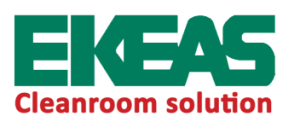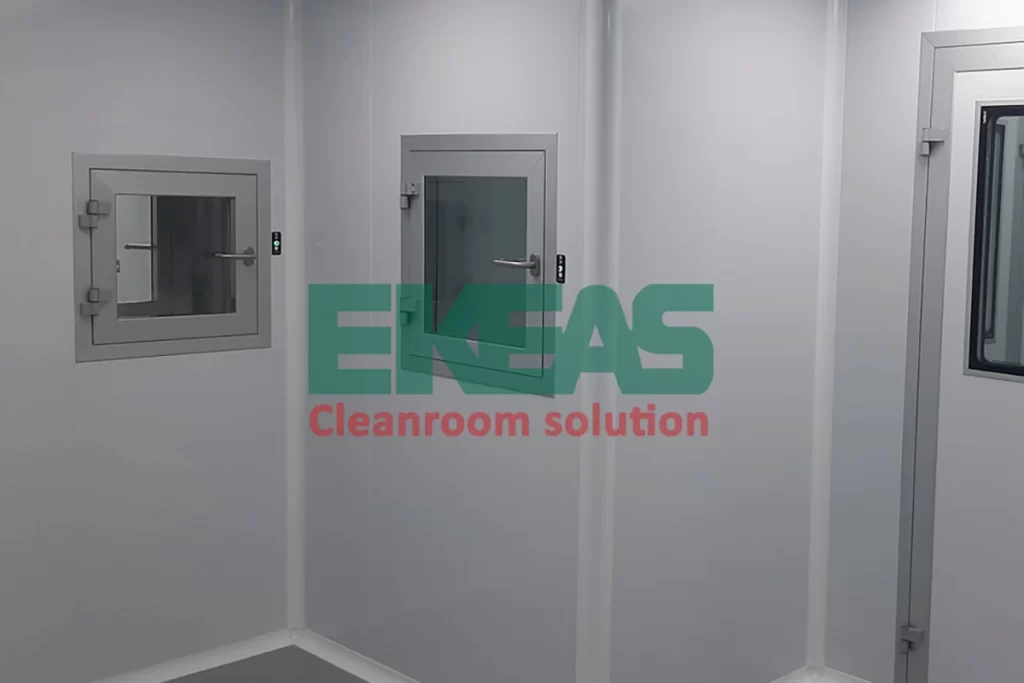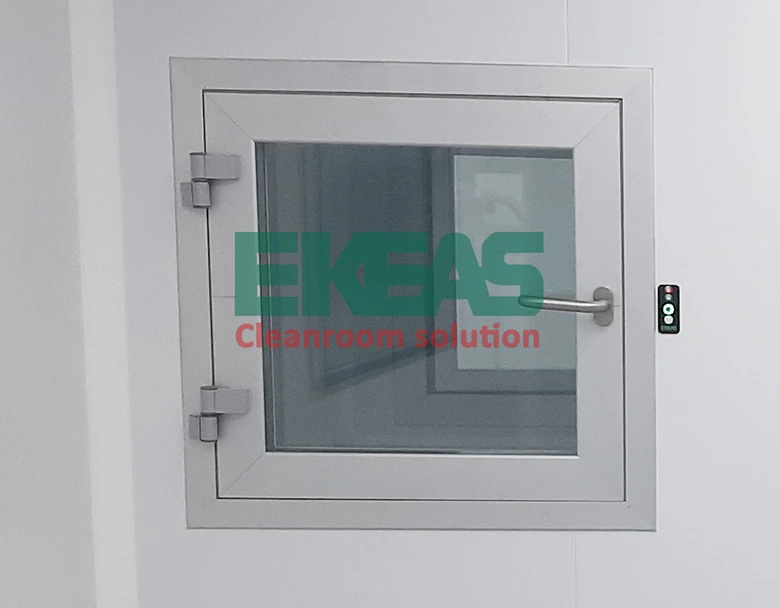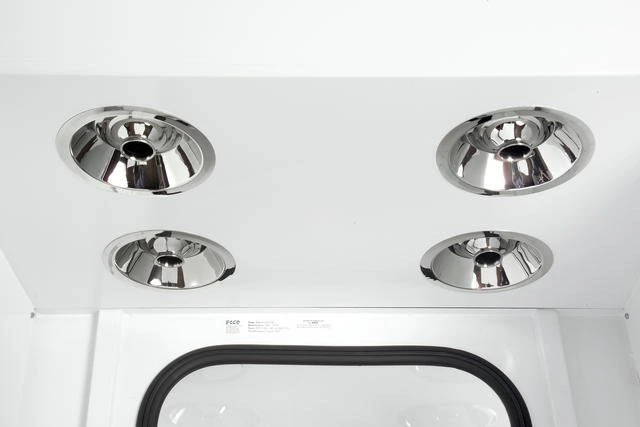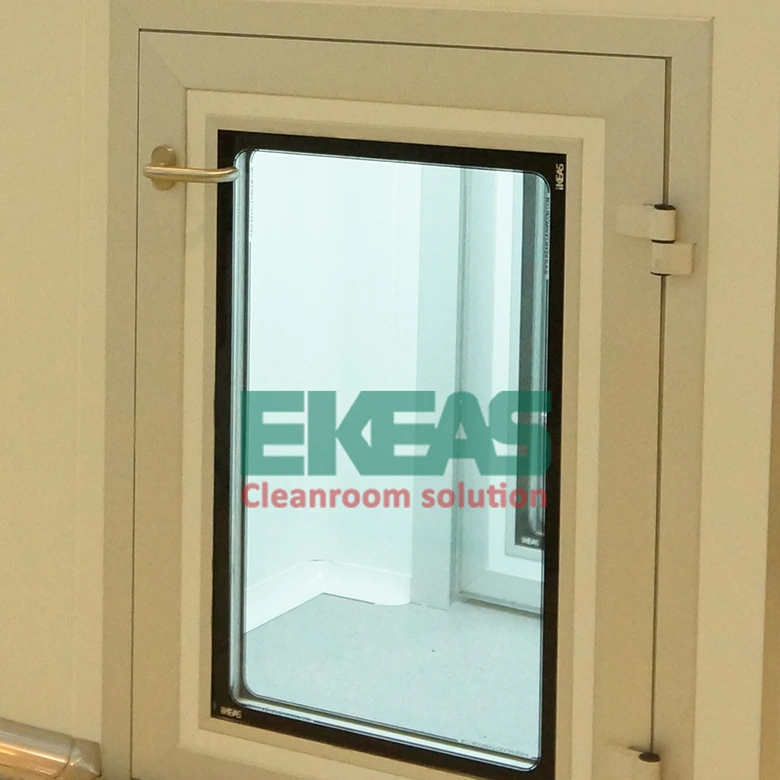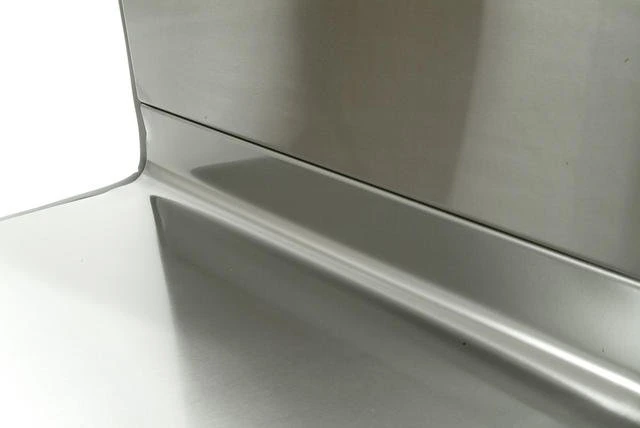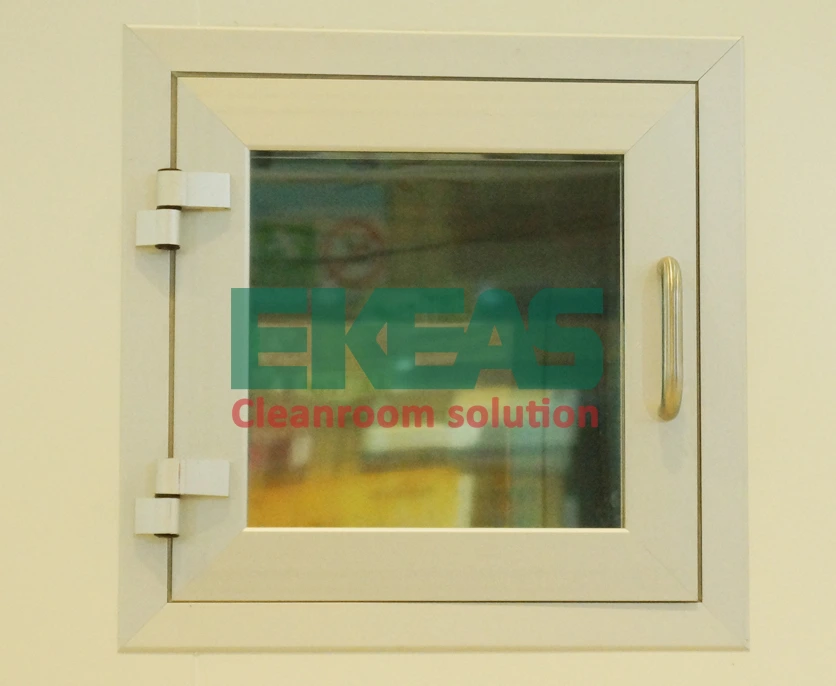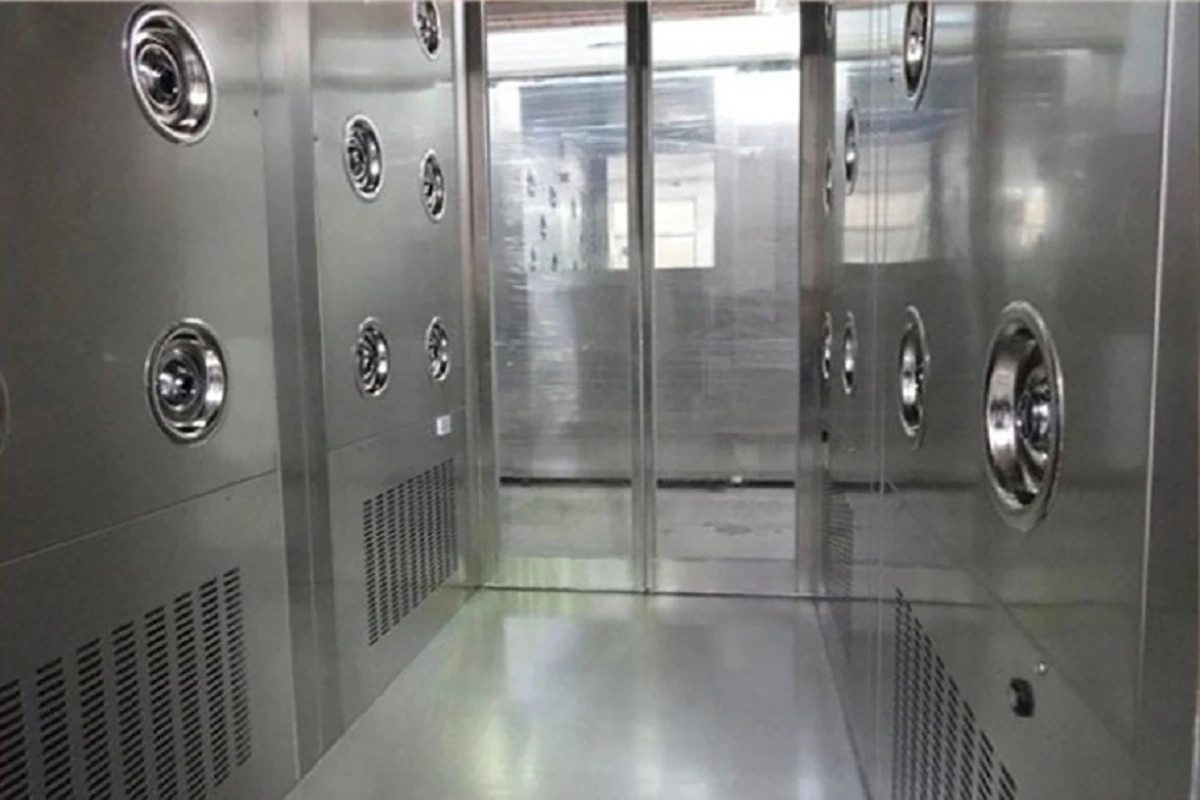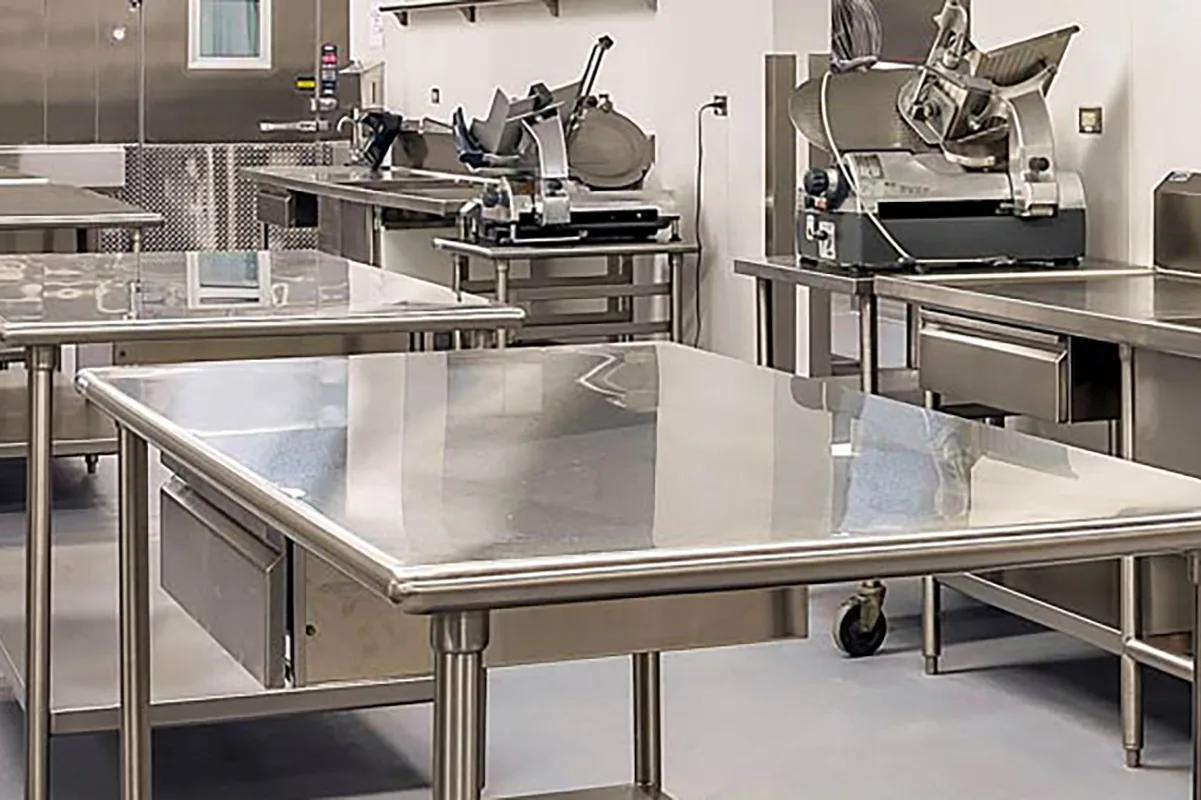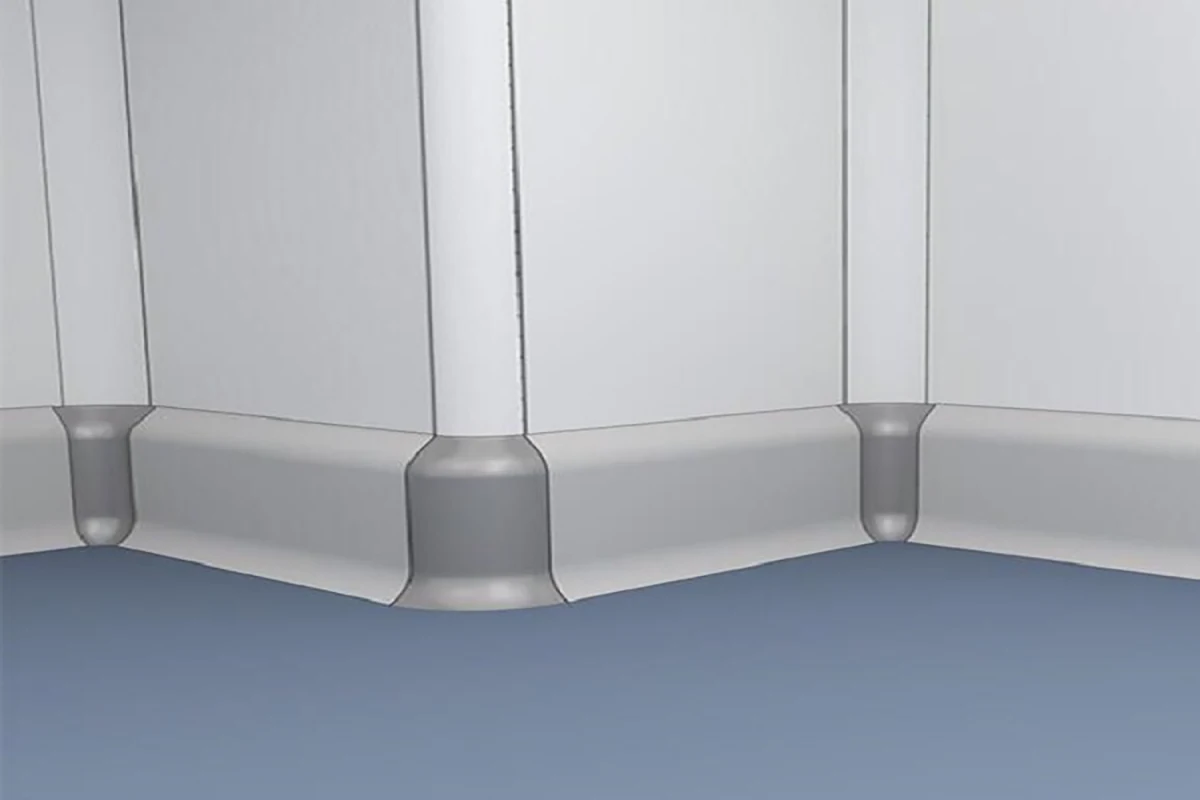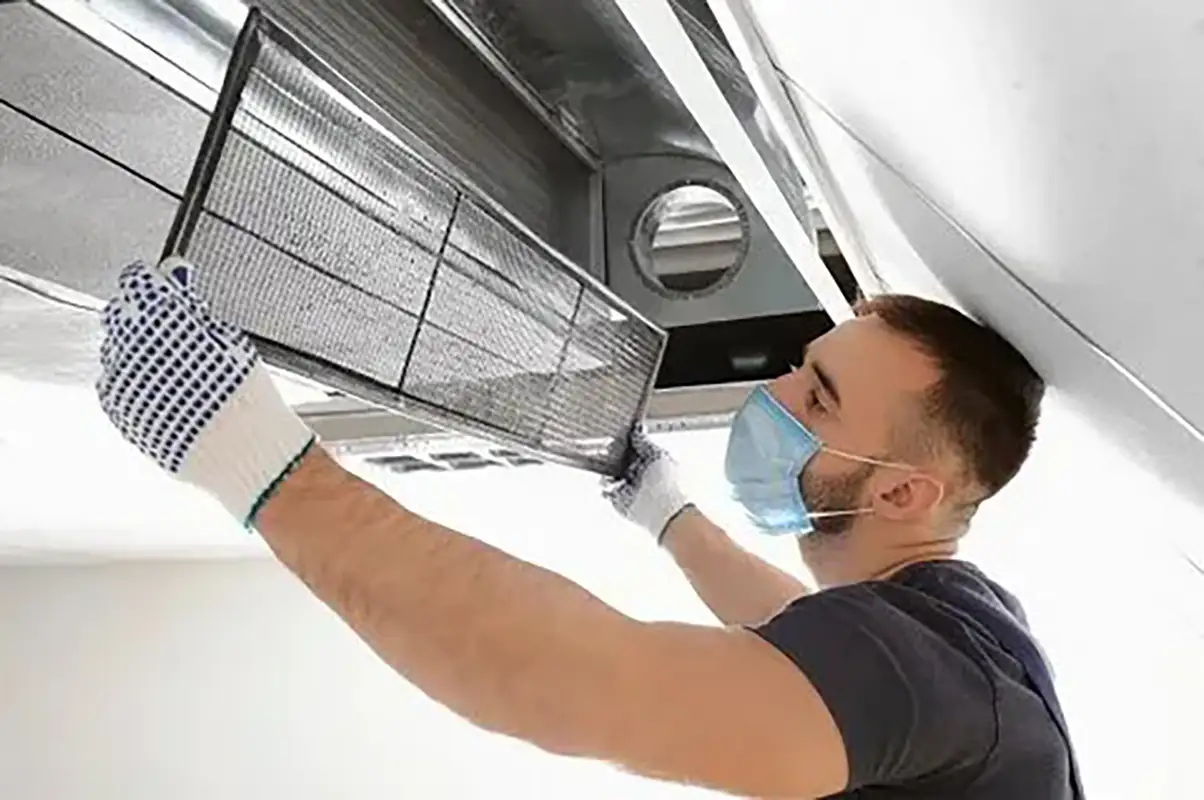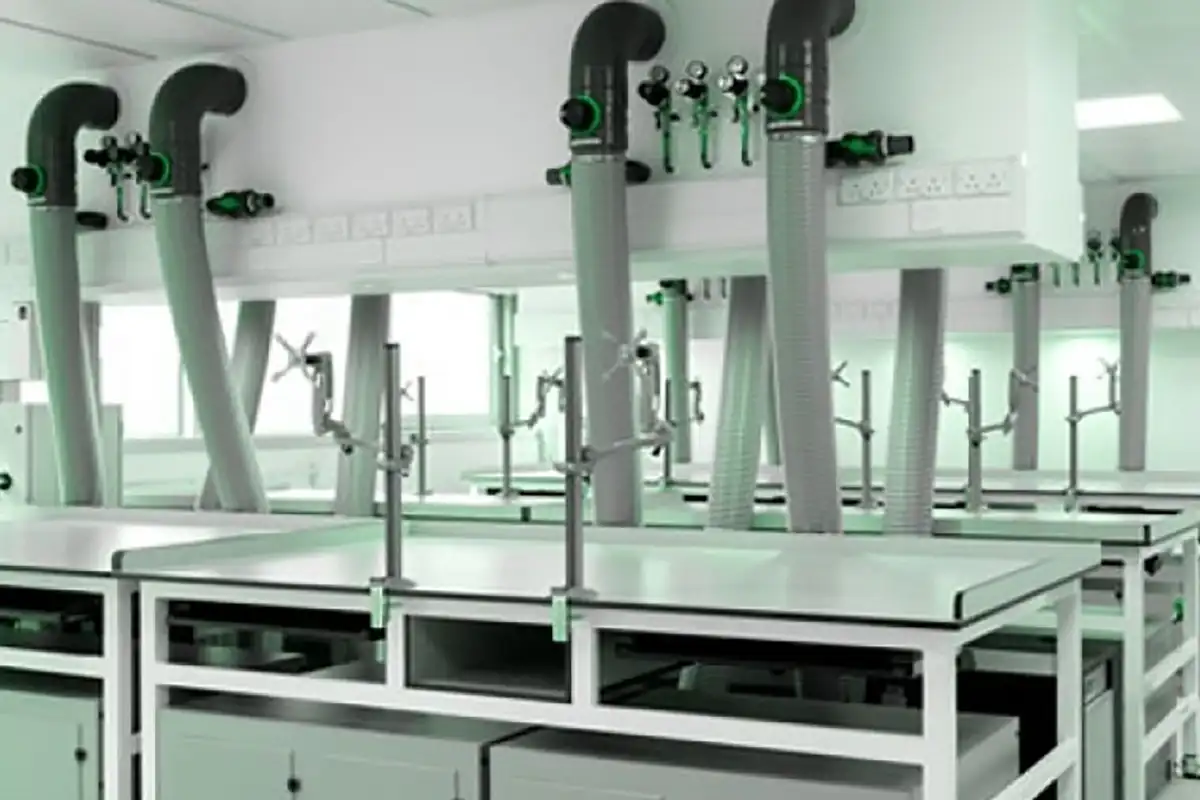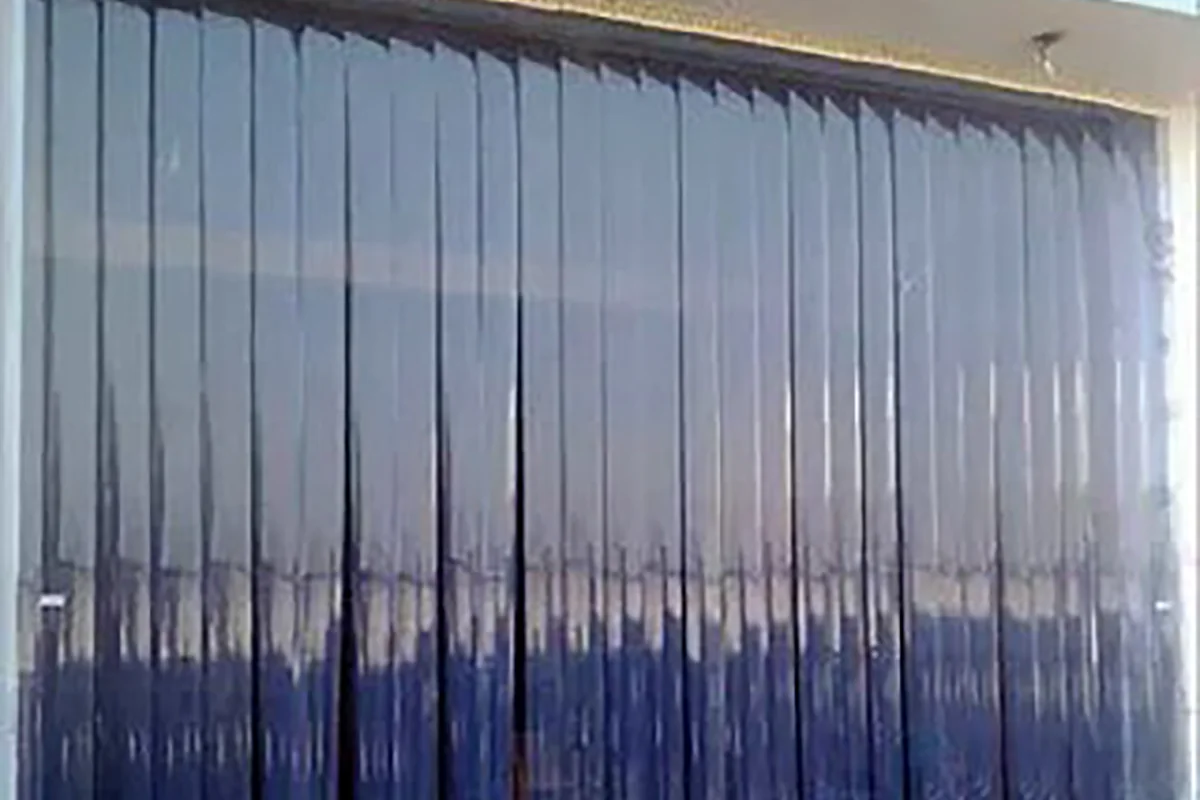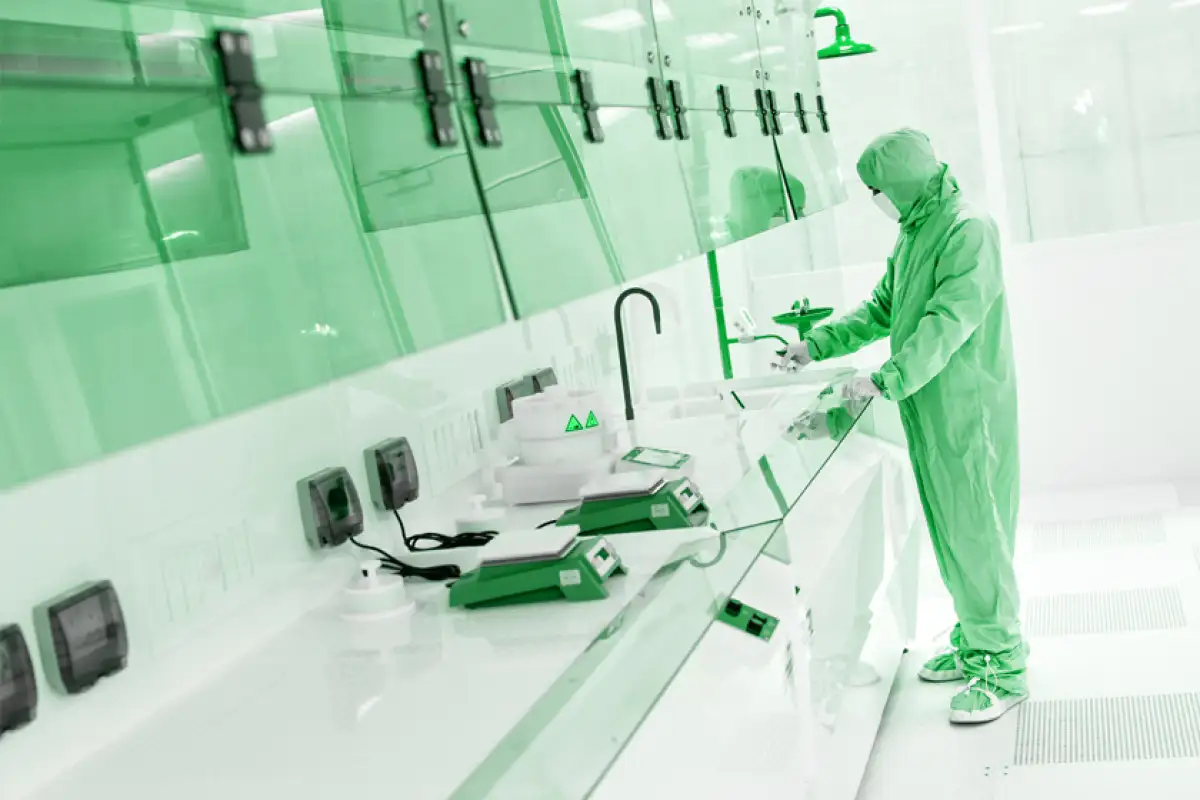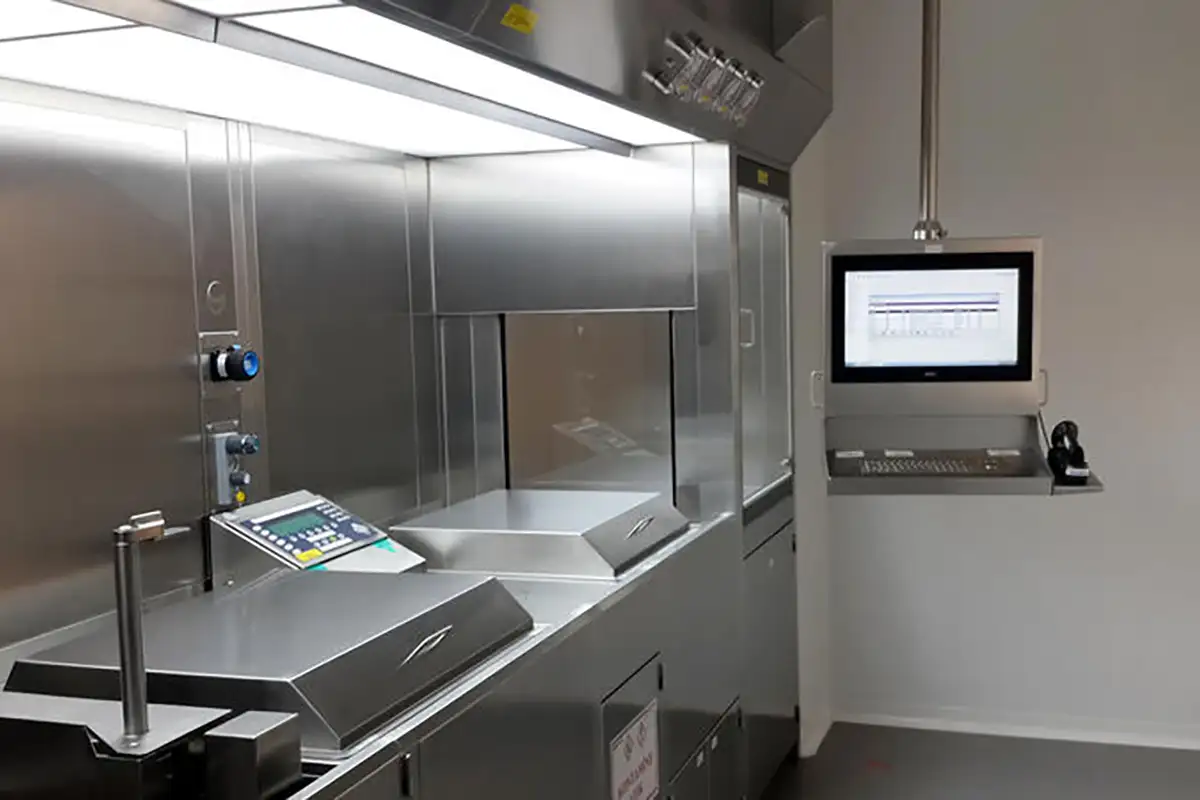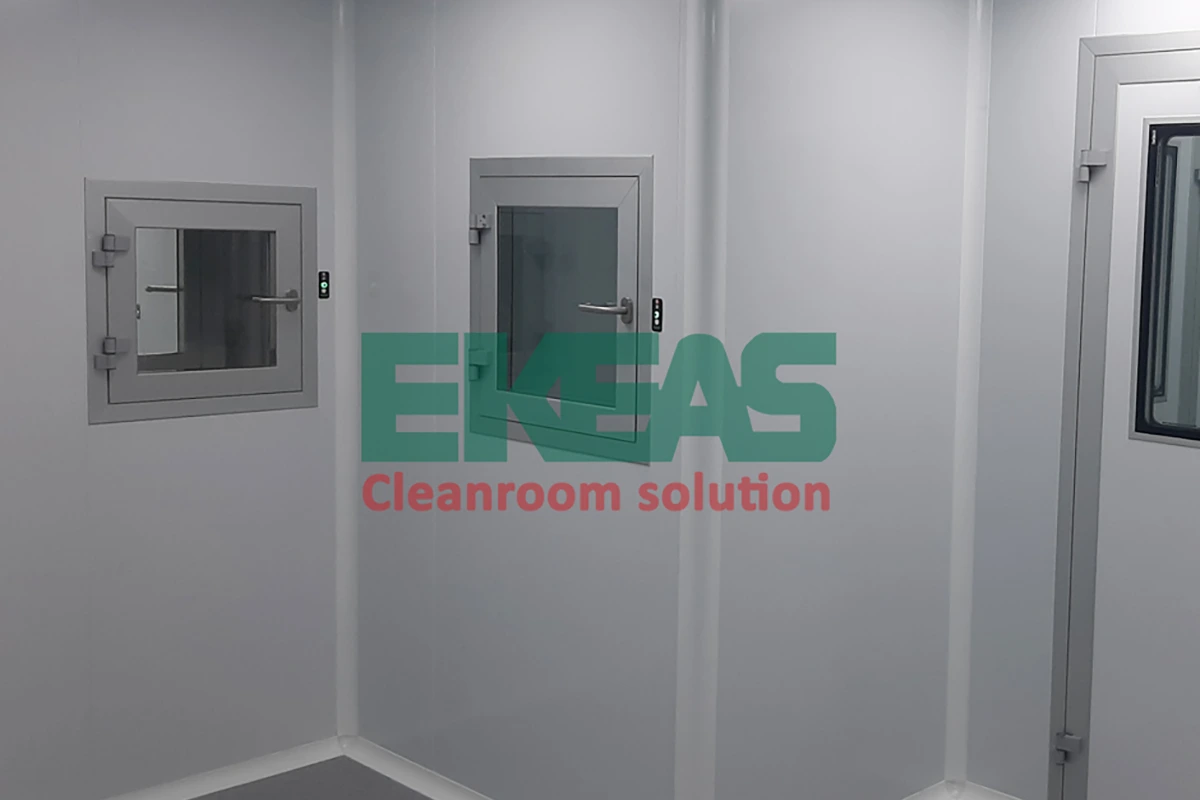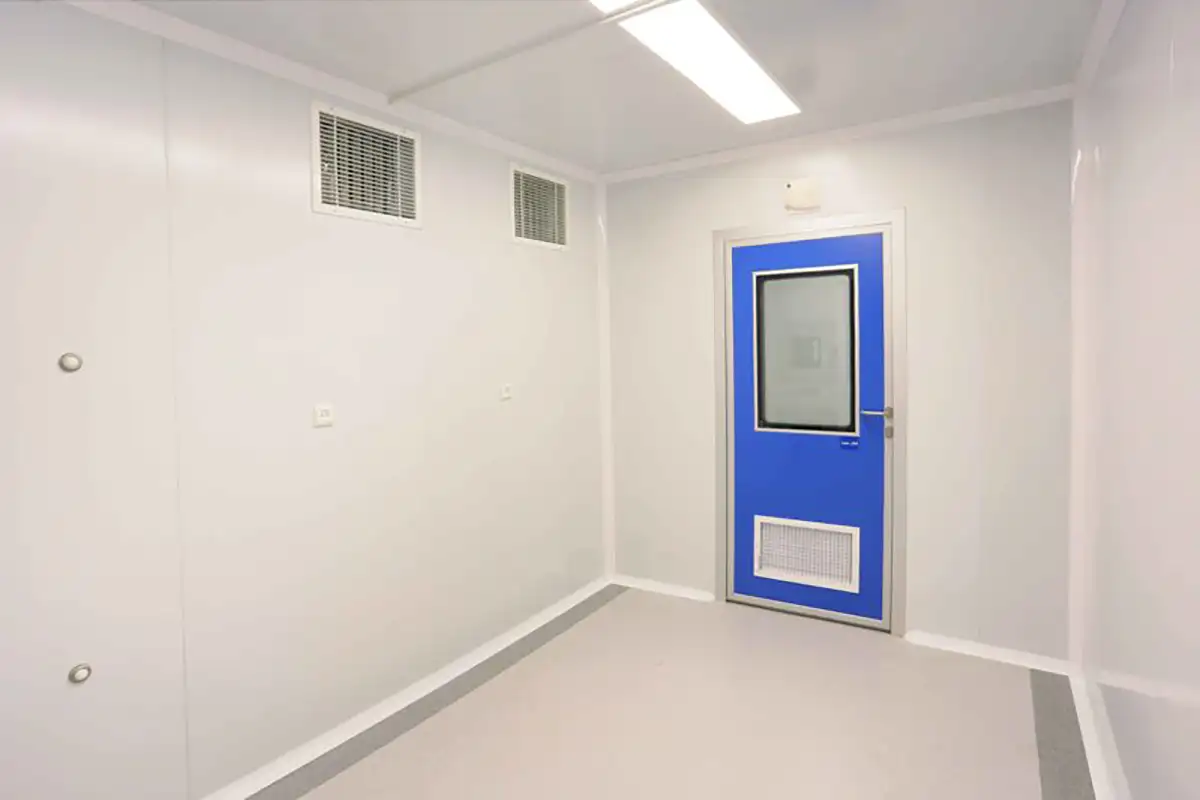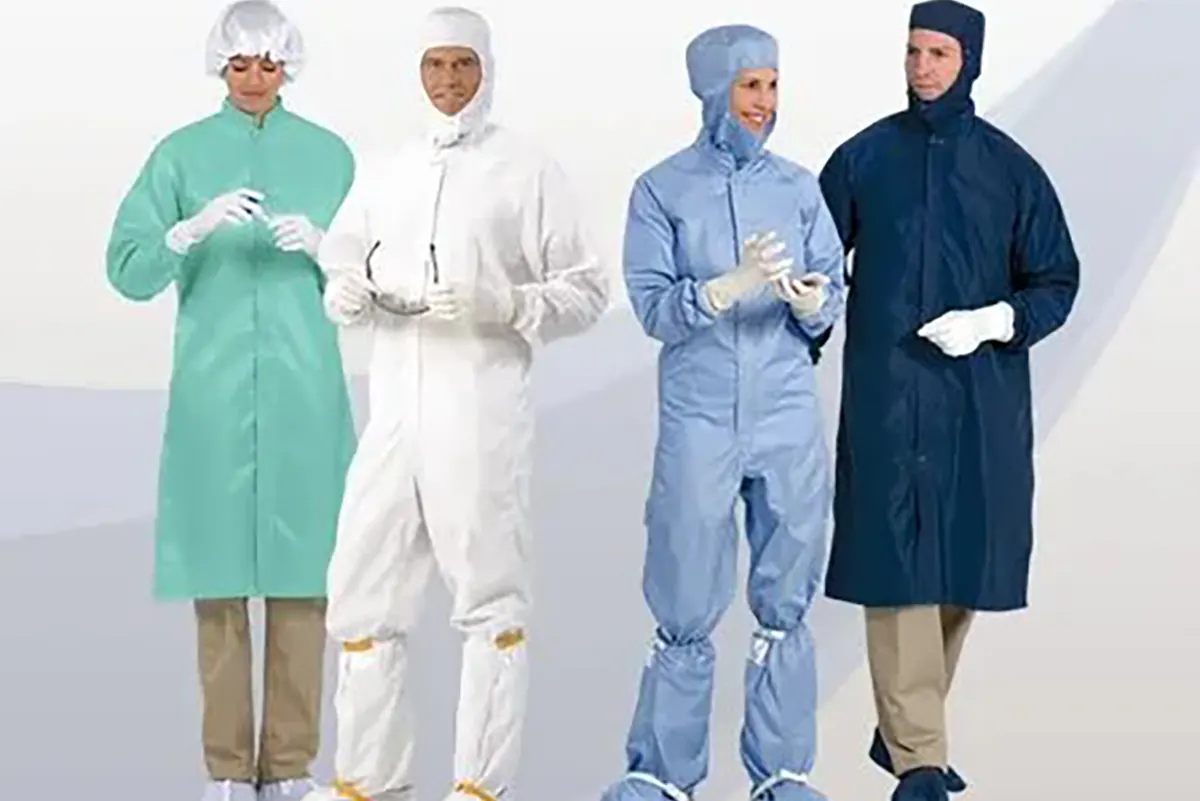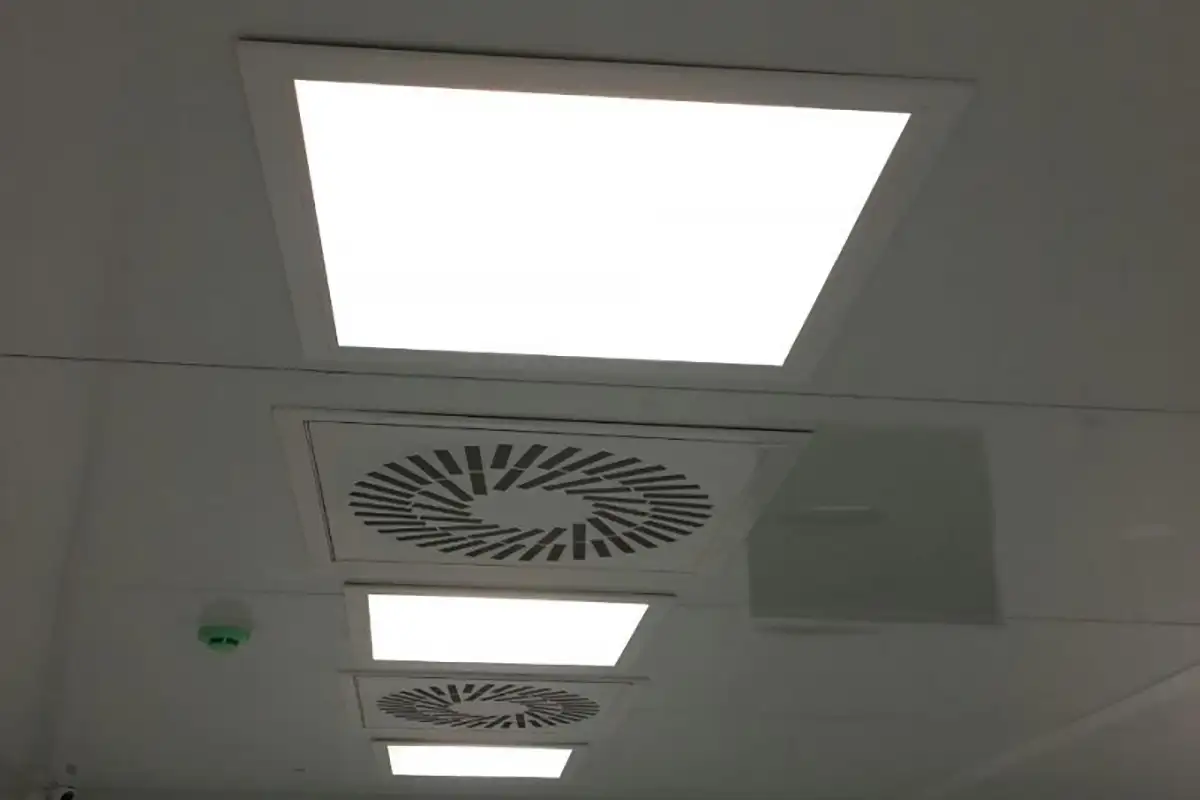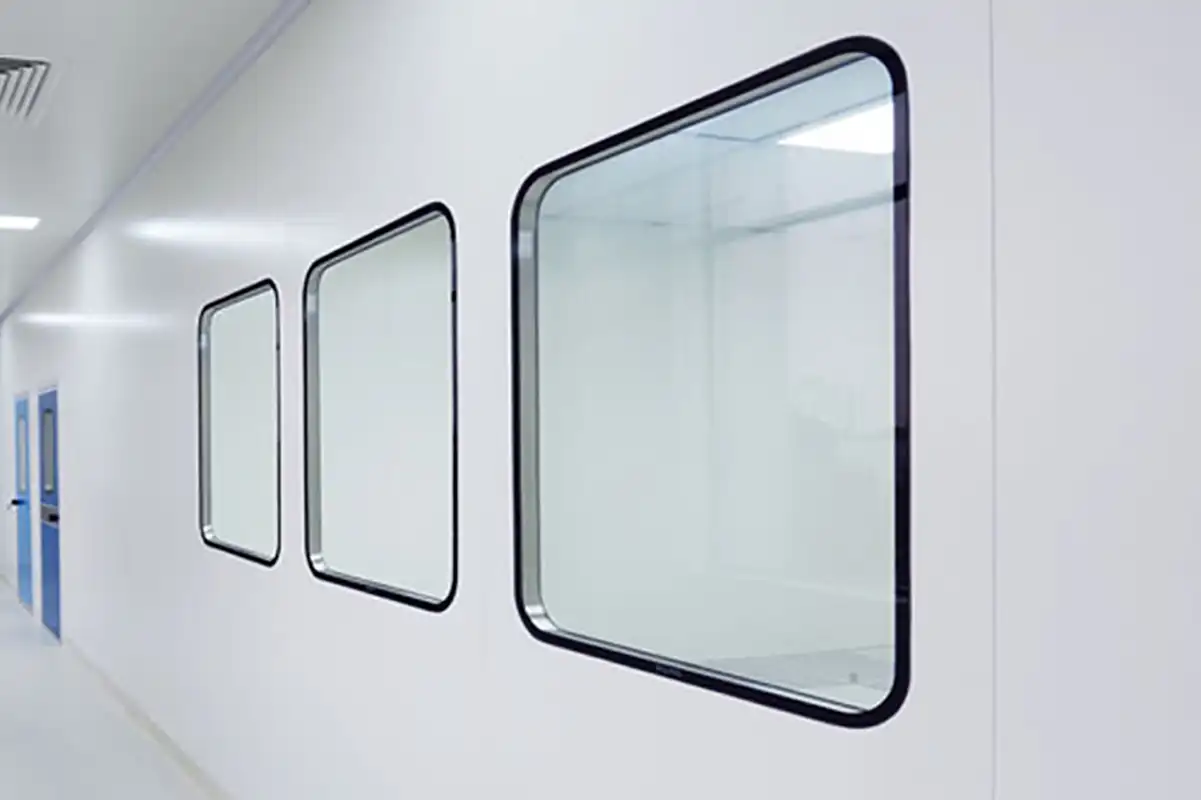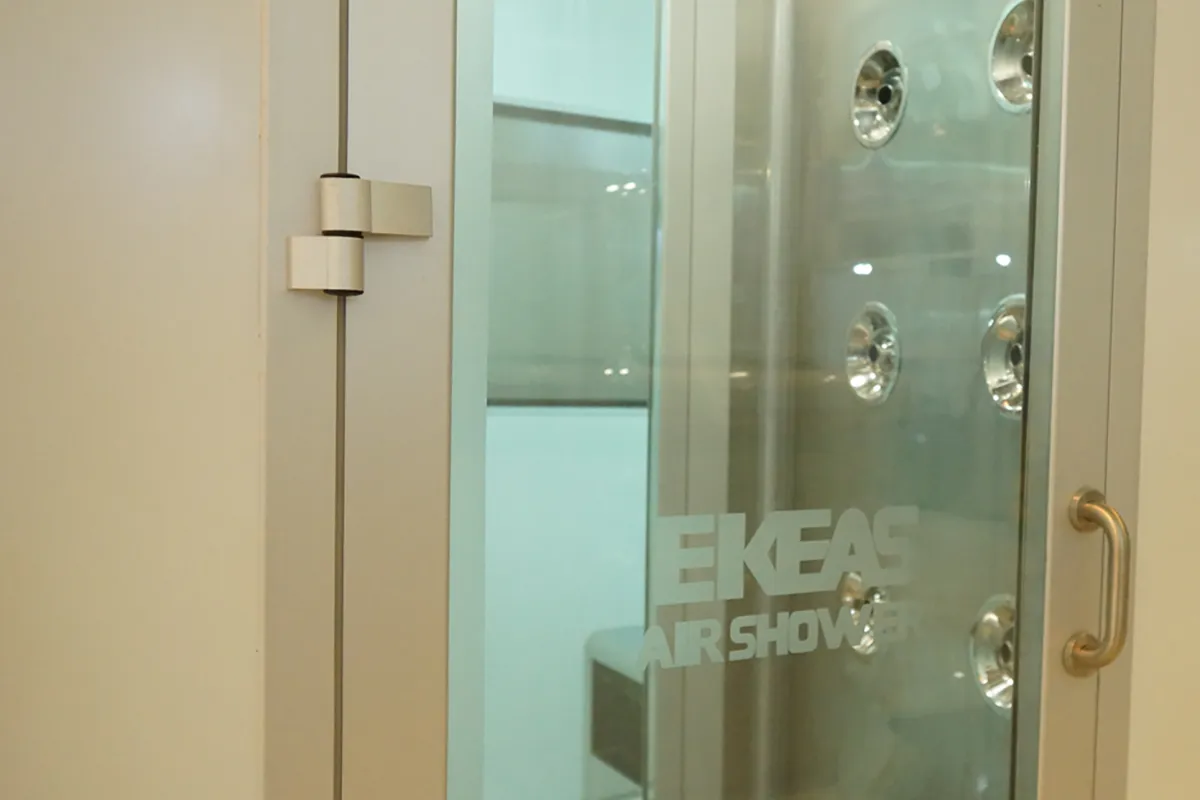Passbox is one of the essential equipment of cleanroom, which is used to enter or exit goods to the cleanroom. The use of passbox makes it unnecessary for personnel to enter or exit the cleanroom to transfer items, which significantly reduces the risk of contamination.
Passboxes are divided into two categories of active and passive according to their function.
Active Passbox
It has a ventilation system and filtered air flows through the nozzles/vents installed in the passbox. Active passboxes are divided into two categories:
Active passbox with independent ventilation
In this type of passbox, a separate fan motor is installed on the device, which makes it possible to adjust the fan operation and also does not require a duct system.
Active Afterbox Connected to Central Air Conditioning System
In this type of afterbox, the incoming air flow to the afterbox is provided through the air handler and requires ductwork.
The components of the active afterbox are as follows:
- Afterbox cabinet (cabin)
- Interlock system
- Door status indicator light
- UV lamp (optional)
- Fan motor
- Prefilter and HEPA filter
- Afterbox pressure gauge
- Vent / nozzle for air discharge
- Lighting
2. Passive Pass Box
In this type of pass boxes, there is no air circulation. All pass boxes (active / passive pass boxes) are equipped with an interlock system. That is, when one door is opened, the opposite door is automatically locked, preventing direct communication between the cleanroom and the environment.
The components of the passive pass box are as follows:
- Pass box cabinet
- Interlock door
- Door status indicator light
- UV lamp (optional)
- Lighting
Passboxes are divided into 4 categories based on their material:
- Full stainless steel (inside and outside 304 stainless steel)
- Semi-stainless steel (inside stainless steel / outside galvanized with electrostatic paint coating)
- All-galvanized stainless steel with electrostatic paint coating
- Panel passbox (sandwich panel)
Applications of passboxes:
- Entry and exit of items / materials / products / raw materials, etc. to the cleanroom
- Prevention of direct contact between the cleanroom and the surrounding environment
- Minimizing the risk of side contamination
Application in cleanroom
Pass boxes are among the most widely used and important equipment in cleanrooms. The applications of pass boxes in cleanrooms are as follows:
- Transfer and entry and exit of products and goods into the cleanroom: By using a pass box, there is no need for personnel to transfer and transport goods to the cleanroom. Therefore, with the presence of a pass box, the risk of contamination entering the cleanroom is very low.
- Pass boxes prevent direct contact between the cleanroom and the surrounding environment. This is because all pass boxes have an interlock system, which means that when one door is opened, the opposite door is automatically locked. Therefore, outside air will not enter the cleanroom.
read more | cleanroom equipment
Different Types of Pass Boxes in Cleanrooms
In general, there are two types of pass boxes used in cleanrooms. One type is called a dynamic or active pass box, and the other is called a static or inactive pass box.
Dynamic or Ventilated Pass Boxes
Dynamic pass boxes have an interlocked cabin that is designed to protect the environment from contamination when transferring materials or objects between two cleanrooms with non-uniform surfaces or from a non-cleanroom to a clean and controlled environment.
read more | Cleanroom Design
Static or Non-Ventilated Pass Boxes
Static pass boxes have an electro-magnetic interlock magnet that is designed for transferring materials or objects between two cleanrooms with uniform surfaces.
Difference between dynamic and static pass boxes
Static pass boxes are designed to transfer tools and equipment between two locations with similar cleanliness levels (in terms of contamination). In contrast, dynamic pass boxes do this between two different environments, meaning that one side is controlled and the other is uncontrolled.
Dynamic pass boxes have internal locks on both sides to ensure that the doors are closed tightly and contamination is not transferred to the other side. This type also has a system that prevents the doors from being opened simultaneously. In static pass boxes, the locks are usually magnetic.
read more | Ways to Identify Sources of Contamination in Cleanrooms
Dynamic pass boxes have a filter because the transfer is done between a clean and non-clean space, or between two spaces with non-uniform cleanliness. The strong suction of the filter helps to quickly remove air contamination, while static pass boxes do not need a filter because they are used to transfer between two clean spaces.
Technical Specifications of Pass box
Pass box, like other tools and equipment in various occupational fields, has its own characteristics depending on the presence of a number of tools and equipment. In this section, we intend to point out its technical specifications for your better awareness.
- This device can be easily installed in the adjacent cleanroom.
- It is produced in different sizes, each with its own functionality.
- It is washable and can be easily cleaned without any hassle.
- The inner wall is made of stainless steel, which is easily cleaned and equipped with an interlock system.
- Equipped with complete air sealing
Other Features of Cleanroom Pass boxes
If we want to talk about other features of pass boxes, we can list the following:
- Pass boxes can be designed and manufactured in different sizes, such as 40 cubic centimeters to 90 cubic centimeters.
- Active pass boxes have a filtering fan and air filter.
- One of the most important features of pass boxes is that some models have an emergency switch. This emergency switch is for the purpose of immediately warning if one of the pass box doors remains open during operation.
- Pass boxes can be easily installed on the wall of the cleanroom.
- In different models of pass boxes, the doors can be opened in different directions. So that the user can choose the desired pass box according to the type of use.
- The airflow in active or active pass boxes, after passing through the air filter, has a speed in the range of 36/100 to 54/100.
read more | Condensing Unit
Components of a Pass Box
Despite the differences in the various types of pass boxes, they all have relatively similar components:
- HEPA filter: This filter prevents the entry of various contaminants.
- Control board: This board allows you to control all activities as needed.
- UV light: This light can be used for disinfection, further contaminant control, and even insect control.
- Door handle: This handle is used to open and close the door.
- Door lock: There are two types of door locks: simple and magnetic. The simple type fully locks the door, while the magnetic type closes with the force of a magnet, like a refrigerator door.
- Gauge: This gauge indicates the pressure difference.
- Lighting system: This system consists of one or more lamps and turns on when the door is open.
- Ventilation system: This system uses suction to remove air and contaminants. This system includes a fan and its air vents.
- Cabinet: This cabinet is made of stainless steel and accounts for most of the weight of the pass box.
Cleanroom Equipment by Ekeas
Cleanrooms include a variety of equipment, and in order for a cleanroom to meet standards, it must use the appropriate equipment. Here are a few examples of cleanroom equipment:
